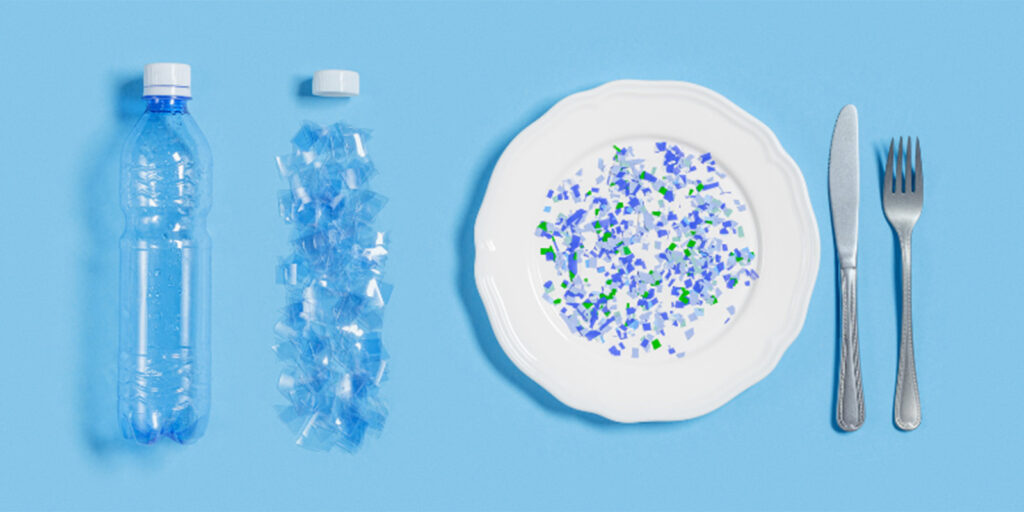People are unknowingly eating five grams of microplastic every month, 28 lakh particles are entering the body through breathing

The Cornell researchers examined microplastics ingestion in 109 countries. People in Southeast Asian countries such as Indonesia, Malaysia and the Philippines top the global per capita list of microplastics ingestion, while China, Mongolia and the United Kingdom top the list of countries breathing in the most microplastics, according to the study.
The study, published in the journal Environmental Science & Technology, is based on models of existing data to estimate how much microplastics humans inadvertently eat or ingest as untreated plastic debris degrades and spreads in the environment.
The study took into account each country’s eating habits, food processing techniques, age demographics and breathing rates to make a more comprehensive estimate of people’s ingestion of microplastics. All of these factors explain the differences in how each country’s residents ingest microplastics.
The researchers said in the study that the increase in microplastics at the level of each country is a major indicator of plastic pollution and the dangers it poses to public health. A large global mapping plays an important role in efforts to reduce local pollution through better water quality control and effective waste recycling.
The study assesses dietary intake by collecting data on the amount of microplastics in major food products such as fruits, vegetables, protein, grains, dairy, beverages, sugar, salt and spices. The models also use the data to predict how much of those foods are consumed in different countries. For example, per capita consumption of table salt in Indonesia and the US is about the same, but Indonesian salt contains about 100 times more microplastics.
Overall, the study found that Indonesians eat about 15 grams of microplastics every month. This is more than any other country, where most plastic particles come from aquatic sources such as seafood. This is a 59-fold increase in everyday microplastic consumption from 1990 to 2018, the range used for the models. Estimates put the average US dietary intake at about 2.4 grams per month, while Paraguay has the lowest at 0.85 grams.
Data on the amount of airborne microplastics, age demographics and human respiratory rates were used to calculate the amount of microplastics inhaled. Residents of China and Mongolia top the list, breathing in more than 2.8 million particles per month.
US residents breathe in about 300,000 particles per month. Only residents of the Mediterranean and surrounding regions breathe in much lower amounts of microplastics, with countries such as Portugal and Hungary breathing in about 60,000 to 240,000 particles per month.
Industrialization in developing economies, particularly in East and South Asia, has led to an increase in the consumption of plastic materials, the generation of waste, and the ingestion of microplastics by people. In contrast, industrialized countries are experiencing an opposite trend, supported by greater economic resources to reduce and remove free plastics.
The study could implement microplastics absorption reduction strategies tailored to local economies and industrial contexts, but such efforts require international collaboration, such as technical support from developed countries to advance waste reduction strategies.
According to the study, a 90 per cent reduction in plastic debris in water could lead to a significant reduction in microplastics, potentially by up to 51 per cent in developed countries and up to 49 per cent in highly industrialised regions.







